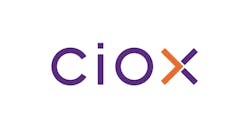In 2008, former President Barack Obama signed laws to accelerate the adoption and meaningful use of digital medical records, a plan that was envisioned by the George W. Bush administration during his 2004 State of the Union address. Then and now, electronic health records (EHRs) offer tremendous promise. In addition to saving time and money, EHRs offer the promise of better data, which improves quality of healthcare and greater insights to the life sciences field, where data drives development of novel therapies. However, more than ten years and $36 billion later, the electronic medical records industry remains fragmented with a disconnected patchwork of vendors and systems.
Where We Started: Operable, But Not Interoperable
The push for EHRs has made great strides: 96 percent of hospitals use some form of EHR today. However, the technologies used by each hospital system, doctors office, insurer and EHR vendor remain largely siloed, creating a web of “electronic bridges to nowhere,” as noted in a joint Kaiser Health News and Fortune report from March 2019.
The pace at which EHRs were mandated and adopted is part of the issue. David Blumenthal, President Obama’s national coordinator for health information technology, explained in the KHN/Fortune report that forcing interoperability goals early on, when 90 percent of the nation’s providers still didn’t have systems or data to exchange, seemed unrealistic. “We had an expression: they had to operate before they could interoperate,” he said.
Today, multiple siloed systems often exist within a single organization. For example, imagine seeking all of the health records for an individual from a single health system. Though on its surface, it seems like a simple task, these kinds of requests can prove problematic.
A single hospital may not have the same system in place across its departments, with older or acquired records remaining on legacy platforms that do not communicate with each other. Now imagine that hospital and all its physician clinics have, in the time since the patient last visited, been acquired into another larger health system, with yet another EHR system. Other times, the data being requested is buried deep within the medical record in subjective narratives. These simple requests for records across a health system are often exponentially more time intensive and complicated than they seem at first pass.
There is good news, though: The US healthcare industry has a long and distinguished history of innovation. The health information management industry is helping to connect and automate the very systems that were initially focused on operability before interoperability. Thanks to the innovative combination of advanced technology and old-fashioned boots on the ground, the problem facing us is one that can be solved. We in the health technology space are stitching systems together to create connected roadways, rather than silos, that can securely deliver complete medical records to their intended destinations.
Solving the Problem: A New Era of Efficient Information Release
So, you want a medical record, or perhaps a batch of records, that span several decades and places of service? What might have taken days or weeks to assemble previously can now be streamlined through automation, saving time and resources while eliminating inaccuracies and manual steps. The existing network of records management personnel – the actual human resources at hospitals and in doctors’ offices – accessing and organizing complete medical records, can work together and scale with automation technology and artificial intelligence for easier, more efficient and valuable results.
When these technologies are combined with trained health information specialists, we create a system by which medical records, regardless of their format, can be efficiently retrieved and digitized. Computer-assisted release (CAR), rapidly accelerates release of information processing and improves quality and richness of data assets much in the same way computer-assisted coding, when implemented effectively, supports improved processing for coding. With the help of innovative technologies, health data organizations today can automate the release of records with tremendous efficiency, accuracy and security.
Connecting the Disconnected Through Collaboration
It’s all about connecting the disconnected -- taking disparate data sources and rapidly transforming them into sharable, interoperable formats for use throughout the healthcare ecosystem while ensuring patient privacy. It’s about understanding the user and use for the data to effectively surface critical information. It’s about assisting life science organizations to gather real-world evidence, and insurers to build better health and wellness programs.
The KHN/Fortune piece illuminates how our industry is mired with too many independent moving parts and too few networks focused on bringing technology and human expertise together. However, with innovations such as CAR, health data companies are bridging the digital silos and gaps that exist. With our advances in technology and process, hospital systems, vendors and government organizations can collaborate to finally bring about a real health data revolution that has been $36 Billion dollars in the making.
Jeff Gartland is the president of clinical revenue integrity solutions for Ciox



